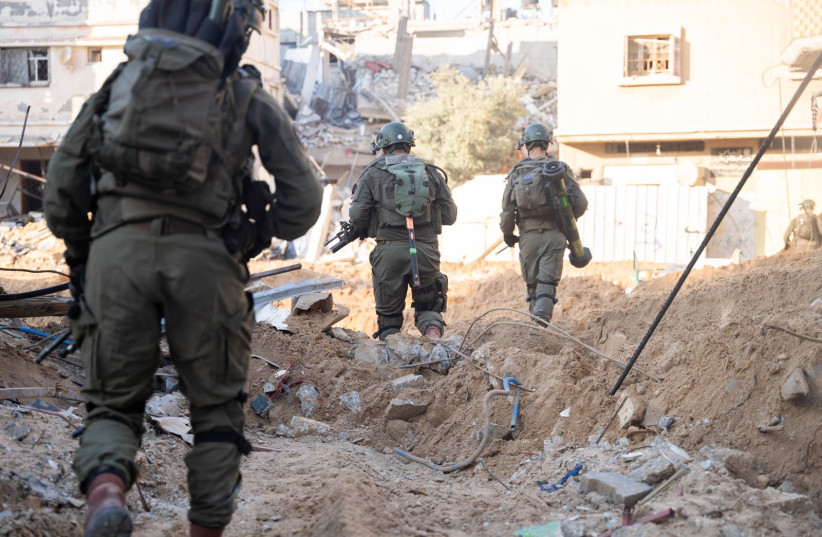There have been plans for months for where to evacuate the 1.4 million Palestinian civilians from Rafah for whenever the IDF would invade it.
To insider followers of the Israeli defense establishment, this was why the fight between Israel and the US over the evacuation always seemed somewhat artificial and potentially more connected to other issues.
But it turns out there are some real sticking points: food, tents, and medical field hospitals.
Israel and the IDF had detailed plans for evacuating the civilians: Al-Mawasi on the coast, to designated parts of Khan Yunis that have already been cleared of Hamas, and to parts of central Gaza that have already been cleared of Hamas.
The plans include specific safe corridors which have also been mapped out.

And the IDF moved most of the 1.2 million Palestinian civilians out of Gaza City mostly successfully, so it has managed a mass evacuation already, in addition to smaller but sizable mass evacuations from Khan Yunis and parts of central Gaza.
Also, Israel and the IDF were willing to stagger the invasion of Rafah into stages to make sure that most of the civilians left before major fighting took place.
The fighting in Rafah is also not a huge impediment for the IDF.
Hamas’s battalions there, whether they have 4,000 fighters as previously said, or 8,000 as Strategic Affairs Minister Ron Dermer said this week, are viewed as much weaker than those of Gaza City and Khan Yunis who the IDF has already thoroughly taken apart.
No matter how many booby traps and tunnels Hamas has in Rafah, the military’s new fighting tactics – from fully integrated warfare with the air force, tanks and artillery, to more highly armored troop carriers that can withstand RPGs, to a plethora of tactics for fighting within tunnels – have proven their effectiveness.
Preparing for evacuated Gazans will be harder than fighting Hamas
But IDF sources have now admitted that they had not fully taken into account that moving civilians from Rafah is completely different from the other evacuations in terms of food, tents, and medical field hospitals.
To satisfy the US, it is not enough to move the civilians without them getting shot; they also need to have food, shelter, and access to medicine once they are moved.
Rafah has been set up for such emergencies in the past and was ready for such an emergency now.
A tent city, food, and medical care were all waiting to some degree and relatively set up for erecting and adding to the existing infrastructure and areas, also helped by the proximity to the border with Egypt where much of the international aid is flown into.
But the three areas that the IDF would evacuate civilians to from Rafah are not.
Al-Mawasi is not as set up for absorbing civilians so that they can be kept fed and healthy for an extended period, and the infrastructure in Khan Yunis and central Gaza has been significantly destroyed by battles between the IDF and Hamas.
Based on this, military sources have admitted that if evacuating 1.2 million Palestinians from northern Gaza took one to two weeks depending on how one measures things, evacuating 1.4 million civilians from Rafah to much less hospitable and prepared areas will take many, many more (translate: one to two months.)
It is not even clear whether Israel and the international aid groups can set up minimally sufficient shelter and supplies in that time, which is partly why the US is still pressing Israel for more targeted and limited strikes and invasions into select parts of Rafah that do not destroy as much of the infrastructure as those that occurred in Gaza City and Khan Yunis, where whole neighborhoods simply no longer exist.
Israel’s problem with this is that Hamas would likely use any areas not being attacked to hide among the civilian population.
Also, Hamas can use the evacuation of 1.4 million civilians to sneak out many of its fighters back to areas which were previously viewed as cleared, just like many fighters used the evacuation of northern Gaza to flee south.
Of course, operationally making sure Palestinian do not flee into Egypt still has to be taken into account– a red line for Cairo which could lead it to fundamentally alter its relations with Jerusalem.
There may be no perfect answers and some of the benefit of spreading out the evacuation over a longer time may enable making more adjustments in real time as problems develop.
But certainly, as long as Hamas is not ready to cut another interim deal with Israel to release more hostages, there is no real option for Jerusalem other than to go into Rafah in some way, and US resistance – as long as the Jewish state gets more serious about planning for the issues of food, tents, and medical care – is likely to recede.
Whether the US will continue to back Israel as any Rafah operation plays out will then depend on the results: Do civilians make it out alive and are they able to continue to stay alive once moved, or not?
